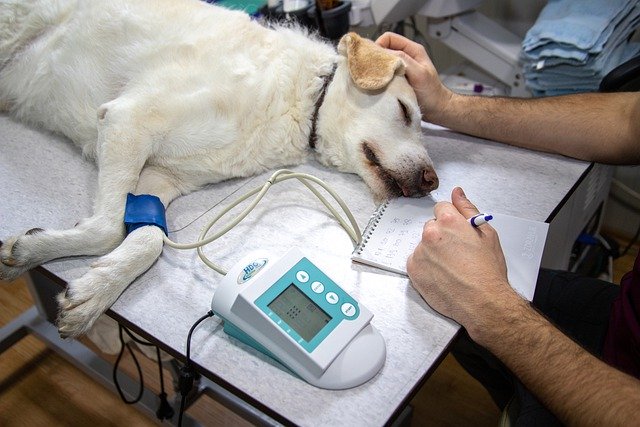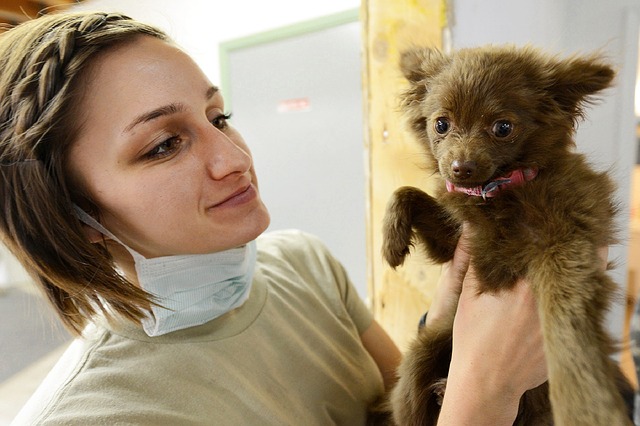What Are The Basics of Benadryl for dogs? What do I need to know?
Just what is Benadryl, anyway? Benadryl is a brand name for Diphenhydramine. This is a product that treats many symptoms of allergies, insomnia, anxiety, in addition to other issues as well. What are the basics of Benadryl that you need to know?
Technically, Benadryl is an antihistamine that blocks the H-1 receptors on smooth muscle and blood vessels. It is one of the very few over-the-counter drugs that veterinarians prescribe for use at home.
Stick with me through the medical jargon necessary in the first few paragraphs. Then we will get to what you really need to know about the basics of Benadryl.
- Why is Benadryl used?
- What is the correct dose?
- Is it safe to give to my dog?
- How do I treat an overdose of Benadryl?
- Are there alternatives to using if?
What are the uses of Benadryl for dogs?
Most commonly, Benadryl is used (for dogs) to treat allergies and insect bites or stings. However, there are other possible uses, as well. The primary ingredient in Benadryl is Diphenhydramine.
Some of the major reasons that Diphenhydramine is given to dogs
-
Allergies or reactions to vaccines
Histamine is a substance that plays a role in allergic reactions. The body, either of a human or dog, releases this substance when it detects an allergen. Receptors then capture the histamine.
This causes the body to produce the symptoms of an allergy. Antihistamines prevent the receptors from capturing the histamine. Therefore, your dog has no symptoms. Symptoms include the following.
- Hives
- Itching
- Coughing
- Sneezing
- Swelling or inflammation
- Redness
- A runny nose or eyes
- Insomnia
Diphenhydramine does more than simply block the capture of histamine. Similarly, it blocks another chemical known as acetylcholine.
When acetylcholine is blocked, sleepiness occurs. Benadryl’s effectiveness for causing sleep can become significantly reduced if the medicine is used very often.
If you prefer to use a more natural approach to treating insomnia, try Melatonin. You can use Melatonin for this purpose in both dogs and humans.
-
Anxiety
Benadryl (Diphenhydramine) has sedative properties that may help keep your dog calm. Some dogs become anxious when at the vet’s office. Others become terrified during a bad storm, or when there are fireworks. This article on how to calm dogs might be of help if you have a dog fearful of loud sounds.https://happymutt.org/tips-on-how-to-calm-your-frightened-dog/
-
Stings and bites
Bites or stings from bees, ants, mosquitoes, or similar critters can also release histamine. Diphenhydramine can help to reduce discomfort and swelling. A serious word of warning.
If a dog is very sensitive to the venom from the bite or sting, their airway may become constricted. If your dog has trouble breathing or is wheezing loudly, do not try to give them anything by mouth!
-
Itching
Diphenhydramine can be used to treat itching related to dermatitis. However, both cetirizine and cortisone tend to be more effective. Topically, the drug has slight anesthetic properties, which also help to reduce itching.
-
Mast cell tumors
Benadryl is not used to cure mast cell tumors. However, it can help reduce the effects associated with increased histamine in the body. This reduction helps the body to control blood pressure and to prevent appetite loss.
-
Vomiting and motion sickness
Diphenhydramine is very similar to dimenhydrinate. It is the active ingredient of Dramamine. It helps to prevent nausea, vomiting, and motion sickness.
In summary
In general, Diphenhydramine is given to dogs to treat mild to moderate symptoms of allergies. It works to reduce skin rashes and many allergy symptoms. Some of the symptoms are runny noses, sneezing, watery eyes, itching, allergic reactions, and motion sickness.
This drug also helps your dog to sleep, giving you and your pet some relief at night. Vets prescribe Benadryl to help your dog with anxiety and the symptoms that are associated with it.
Potential Side Effects of Benadryl for Dogs
As with all drugs, there are possible side effects associated with using Benadryl. You should always speak with your veterinarian before giving any medicine to your dog. Be sure to ask what dosage is best for them specifically.
Your dog’s vet will know their general health conditions and any medications they are already taking. Some medications do not mix well with others. Other medications should not be taken if the dog has certain underlying medical conditions.
If your dog has any of these conditions, ask your vet before you even consider giving them Benadryl.
- Pregnancy
- Seizures
- Heart failure
- Angle-closure glaucoma
- Bladder neck obstruction
- Allergic lung disease
- Prostatic hypertrophy
- High blood pressure
- Cardiovascular disease
There are potential side effects of using Benadryl. You should watch your dog closely for the first 1-4 hours after his first dose of Benadryl. This is the time frame in which most side effects will occur.
It is not wise to give your dog the full dosage of Benadryl the first time it is given. You may wish only to give them a partial dose. Then wait for a few hours to see if your dog has any side effects or symptoms.
Potential side effects of Benadryl can be divided into two major categories
Common Side Effects
- Dry mouth
- Urinary retention
- Increased heart rate
- Sedation
- Hypersalivation (excessive drooling)
- Rapid breathing
Rare Side Effects
- Vomiting
- Diarrhea
- Increased appetite
- Decreased appetite
These side effects usually occur within an hour of taking the medication. However, it can be delayed up to 4 hours from taking it. They are typically mild. If, however, a dog experiences severe side effects, the animal needs immediate veterinary care. DO NOT DELAY IN TAKING YOUR DOG TO BE SEEN BY A VETERINARIAN.

You should know the basics of Benedryl in dogs, including reactions
What is the correct Benadryl dosage for dogs?
The most commonly recommended dose of Benadryl for adult dogs is 2 to 4 milligrams per kilogram of body weight. This is equal to a dose of 0.9 to 1.8 milligrams per pound of body weight. This information is according to the Merck Veterinary Manual.
The typical dose of Benadryl is to be given to your dog three times a day, 8 hours apart. However, it is best to confirm this dosing schedule with your vet. The safest and best dose of any medication for an individual dog can vary.
The ideal dose depends on several things. They are the dog’s condition, history with the drug, and other medications being given. Of course, you should always keep in mind any other health issues the animal may have.
Although the Merck Veterinary Manual clearly defines doses, it is best if the veterinarian is consulted. Having accurate information regarding specific dosing instructions helps to avoid potential problems.
Knowing the Basics of Benadryl Includes Recognizing an Overdose
In general, Benadryl is a very safe drug. It is improbable that anyone would deliberately give a dog enough of the drug to be dangerous. However, because dogs often eat things they should not, accidental overdoses do happen.
The Journal of Veterinary Emergency and Critical Care presented a case about a Labrador retriever. The dog ate more than 16 times the maximum recommended dose of Benadryl. The overdose symptoms were so severe that the dog had to be hospitalized.

Your vet knows the basics of Benadryl for your dog
Signs and symptoms of a Benadryl overdose can range from moderate to severe and may include the following:
- Agitation.
- Aggression.
- Abnormal behavior.
- Abnormal heart rate.
- Dilated pupils
- Muscle tremors.
- Increased body temperature.
- Extreme drowsiness.
- Increased blood pressure.
- Difficulty breathing, wheezing or gasping for air
If you suspect that your dog is suffering from a Benadryl overdose, call your veterinarian immediately.

if your dog has a reaction to Benadryl you should call your vet for emergent help
Treatment of Benadryl Poisoning in Dogs
In the case of Benadryl poisoning, your dog should be seen and evaluated by your vet immediately. If this is not possible, your vet will likely give you instructions on what you can do urgently. How to properly make your dog throw up is something you need to know how to do. The sooner this is done, the better it will be for your dog.
Activated charcoal absorbs the toxins in your dog’s stomach and your vet may choose to use it for this purpose. Or, the vet may choose to pump the stomach. IV fluids prevent dehydration and are a first line therapy. They also balance the electrolytes in his system.
No dog should die for lack of medical care. One section of this article deals with financing expensive vet care. https://happymutt.org/can-you-afford-to-own-a-dog/
Which Benadryl products should you avoid?
Most pharmacies carry a variety of Benadryl products in addition to generic products containing Diphenhydramine. Not all of these products are safe for dogs. Some products contain other medications that may be toxic to dogs.
Two common meds such as acetaminophen or pseudoephedrine can cause serious problems. Products that contain alcohol are not appropriate for dogs. Nor are products that contain artificial sweeteners or flavorings. Some of these are not safe for dogs.
Alternatives to Benadryl
There may be situations where Benadryl is not a reasonable choice for your dog at all. You may prefer a more holistic remedy. Depending upon symptoms, you may wish to consider the following options:
- Quercetin is called nature’s Benadryl. It is reportedly able to achieve what Benadryl does without any side effects. Quercetin is a flavonoid that comes with antihistamine, anti-inflammatory, and antioxidant properties. It is in many fruits and vegetables. Apples, broccoli, and green tea are some of the best sources. Quercetin supplements are available as well.
- Papain works well in the case of inflammation and itching. You can use this with quercetin for the best results.
- Full Spectrum CBD Oil for dogs orally helps to improve many symptoms.
- Wild Alaskan Salmon Oil helps to keep the skin healthy and supple, less dry and itchy.
-
Topical Use
- Oat Baths are great for itch relief,. But, do not use when your dog has a yeast infection. It feeds yeast infections.
- Aloe Vera is an excellent natural remedy for skin itchiness, burns, and hot spots. Be sure to use only the gel and not orally as it contains a laxative. It possesses antibacterial, anti-inflammatory, and anti-fungal properties. You should apply Aloe Vera at least twice a day.
- Use Baking Soda as either a paste or a spray to treat itchy and inflamed skin. Although this works, it is slower than most of the others mentioned.
-
Both Orally and Topically
- Coconut oil is beneficial in digestion and great for treating inflammation. It boosts the immune system as well and possesses antiviral and antibacterial properties. This can help in reducing itchy skin
- Apple Cider Vinegar is safe to use both orally and topically. But, do not use it on open wounds.
- Colostrum is the first expression of mammal’s milk. It is a strong immune builder and useful for treating allergies as well.
Resources for the Basics of Benadryl
For more information on Benadryl and its use in dogs, see the following sites:
- Antihistamines at Pet Poison Helpline.
- Diphenhydramine at Veterinary Partner.
- PubChem entry for Diphenhydramine from the National Center for Biotechnology Information, U.S. National Library of Medicine.
- http://veterinarycalendar.dvm360.com/top-ten-drug-interactions-dogs-and-cats-proceedings



